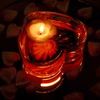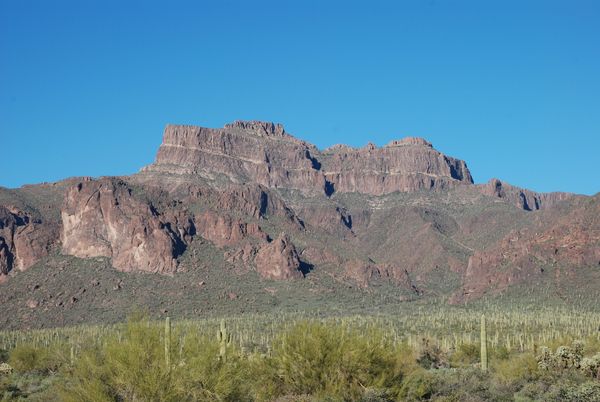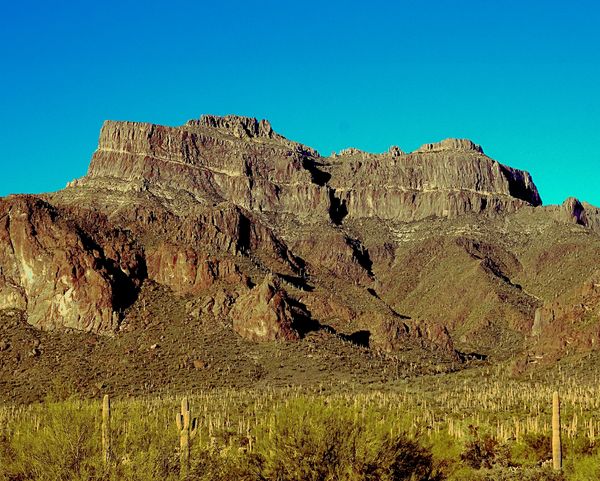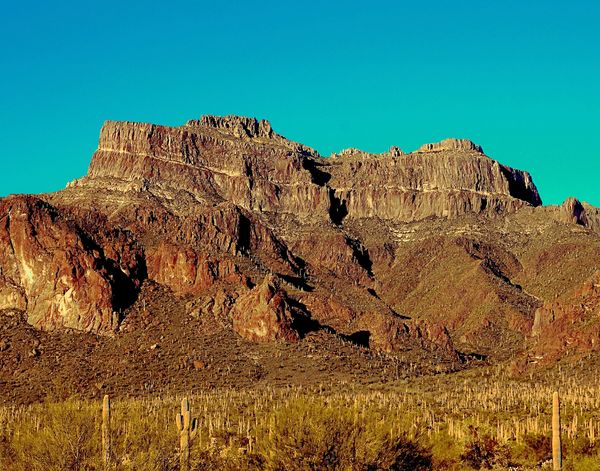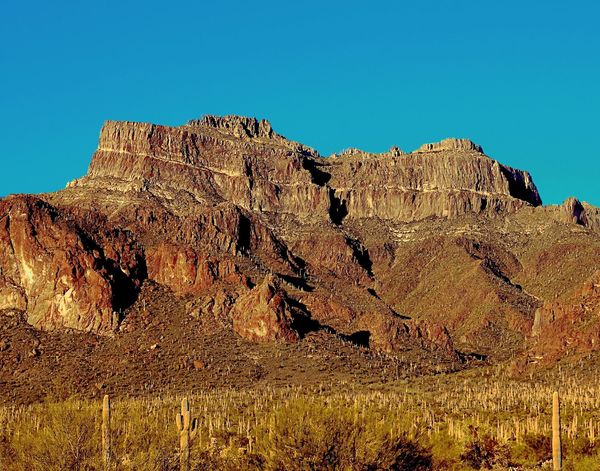Post Processing on a Linux Box
Nov 7, 2014 17:45:11 #
I have been several months putting together a laptop with the Linux operating system. It is a wonderful internet machine. However, I would really like to do photo post processing with it. Good image editing software is not easy to find for Linux. I have tried many programs and have come to the conclusion that Gimp, Darktable, Raw Therapee, Lightzone, and Aftershot Pro2 are the top programs. This series of photos was post processed almost entirely with Aftershot Pro2. More often than not, I shoot RAW+jpg. The first image is the jpg version (sister image) of the RAW file I used to process the final result. The second image is the 8-bit tif converted to jpg (99% quality) for this site after all the dirty work was totally accomplished in the Linux version of Aftershot Pro2. The 8-bit tif was resized in Paintshop Pro X6 Ultimate (Windows 8.1) and very slightly tweaked for just a little more detail in PSPs Topaz adjust 5 plugin. Also painted the sky at 30% opacity to hide the little bit of noise. Then saved as a jpg (last image). I was trying out Aftershot Pro2. Pretty impressive and easy program to use. I think I will get better as time goes on. I was attempting to achieve a good crisp image at the colors very close to what I remember seeing. My final image is pretty close. Your comments and processing techniques are welcome. Have at it if you so desire.
Nov 7, 2014 18:44:04 #
In the final image, the sky looks unnaturally greenish. If you had retained the blueish hue of the first image, I think it would look more convincingly realistic. A fairly easy edit to select the sky and color-shift it away from the green.
Nov 7, 2014 18:49:21 #
pixbyjnjphotos wrote:
I have been several months putting together a laptop with the Linux operating system. It is a wonderful internet machine. However, I would really like to do photo post processing with it. Good image editing software is not easy to find for Linux. I have tried many programs and have come to the conclusion that Gimp, Darktable, Raw Therapee, Lightzone, and Aftershot Pro2 are the top programs.
A laptop is not perhaps the best system for photo editing. The monitors on laptops just are not good enough. On the other hand, if you get a good IPS monitor to use where you are most often located, it can work very well despite the problems when you are away from that location.
You do really want a decent CPU and a 64 bit system. One thing you do not want is a hyperthreaded CPU, as opposed to something with multiple cores. Hyperthreading is okay when the process is not CPU bound. Image editing is. Two real cores is faster. Splitting one core into two is slower.
Plus you'll want at least a couple of external disk drives to provide image storage and a backup. 1 or 2 TB eSATA or USB3.0 disks aren't expensive.
I would recommend staying with GIMP 2.6 if you actually do much editing. 2.8 is nice, but... it is also slower. If you never work on large files for printing then 2.8 is better.
I would highly recommend UFRAW for raw conversions. It was designed with an X mindset rather than the way MicroSoft does things. The main trick is to configure it to save only the ID file and to save the configuration each time. Then you whip through the RAW files very quickly, because you don't wait for the output file to be rendered and saved. When you have a *.ufraw file for each RAW file, run "ufraw-batch" to do them all. You can be doing other things while the computer works. Save them all to 8-bit TIFF files, which you then edit with GIMP.
Also, make sure you have ImageMagick tools. Lots of really good stuff, including a viewer.
I use a number of shell scripts. All resizing is done using ImageMagick's "convert" program via a script. I flip all images to the right orientation with another script. And, mostly because I use an 8-core system, I run a script to invoke ufraw-batch in a way that fully loads the system.
Nov 7, 2014 23:22:22 #
Apaflo wrote:
A laptop is not perhaps the best system for photo ... (show quote)
Thanks for all the info. You have mentioned some things that are sort of new to me. The laptop I am using is several years old-came with Vista on it. It has an AMD Turion 64 processor and a 130 gig harddrive. Not real fast but I don't need speed as much as I need programs to really get the job done. I work off of a 500 gig external hard drive and back up to an external 1 terabyte hard drive. I don't usually save any pictures to my computers. I am running Linux Mint 16 for an OS. Gimp is a great program but I am not really excited about learning a new program when I am pretty proficient with Paintshop Pro. I don't do any batch processing. When I start with an image I go with it to the finish. If I were doing weddings or some other events with hundreds of pictures I might be inclined to investigate batch processing. I find Linux very interesting and very fast compared to windows. Thanks again for your response and I will have a look at ImageMagic. Have a GREAT DAY!
Nov 7, 2014 23:44:04 #
rook2c4 wrote:
In the final image, the sky looks unnaturally greenish. If you had retained the blueish hue of the first image, I think it would look more convincingly realistic. A fairly easy edit to select the sky and color-shift it away from the green.
Maybe this one is a little better. Thanks for your comment and have a GREAT DAY!
Nov 8, 2014 07:09:07 #
pixbyjnjphotos Said in part: "This series of photos was post processed almost entirely with Aftershot Pro2.
Aftershot Pro... by Corel, is under rated by many who only see the world thru Adobe glasses.
Very good shots and very good post work with Aftershot.
Aftershot Pro... by Corel, is under rated by many who only see the world thru Adobe glasses.
Very good shots and very good post work with Aftershot.
Nov 8, 2014 07:57:02 #
K7DJJ
Loc: Spring Hill, FL
This page lists some other Linux programs you could try.
http://www.everything-linux-101.com/class-topics/
http://www.everything-linux-101.com/class-topics/
Nov 8, 2014 10:11:58 #
dpullum wrote:
pixbyjnjphotos Said in part: "This series of photos was post processed almost entirely with Aftershot Pro2.
Aftershot Pro... by Corel, is under rated by many who only see the world thru Adobe glasses.
Very good shots and very good post work with Aftershot.
Aftershot Pro... by Corel, is under rated by many who only see the world thru Adobe glasses.
Very good shots and very good post work with Aftershot.
Thank you for looking and your kind comments. Yes, there are some great alternatives to Adobe. I did purchase Aftershot Pro2 and I believe I am going to like it a lot. I have tried lightroom and didn't care much for it. Besides, lightroom will not work on Linux. As Linux becomes more popular there will be other programs available.
Nov 8, 2014 10:20:40 #
K7DJJ wrote:
This page lists some other Linux programs you could try.
http://www.everything-linux-101.com/class-topics/
http://www.everything-linux-101.com/class-topics/
Thanks for your input. I have tried most of the programs listed. I find that many of the Linux programs available for photo editing are specialty type programs and not overall good editing programs. Gimp is great but there is a learning curve. Thanks again for looking and your link. Have a GREAT DAY!
If you want to reply, then register here. Registration is free and your account is created instantly, so you can post right away.
